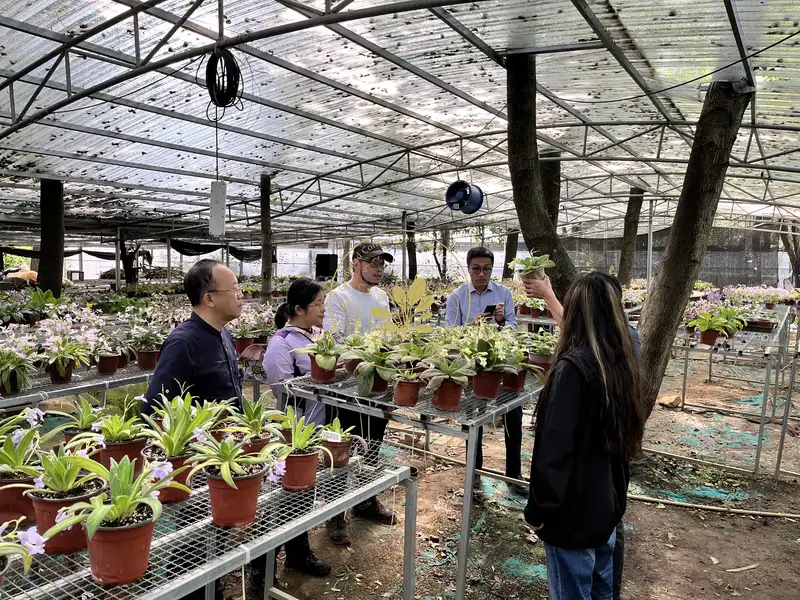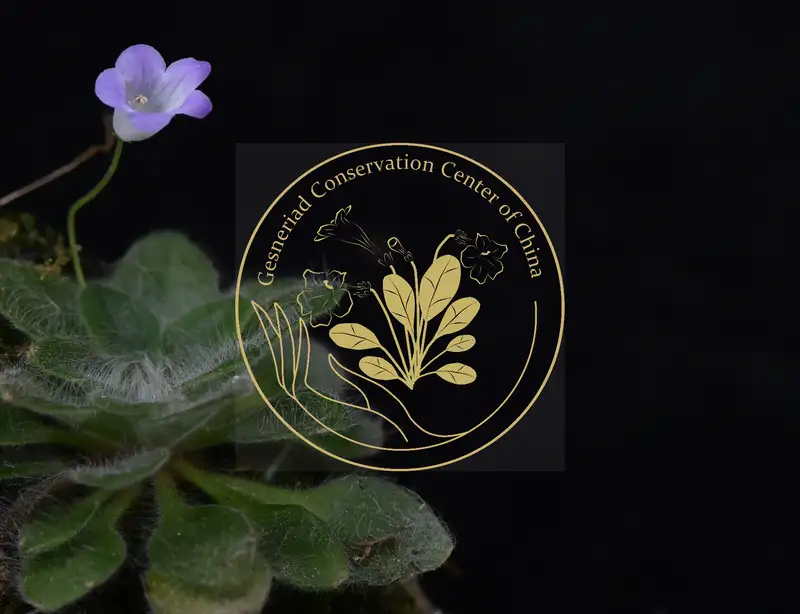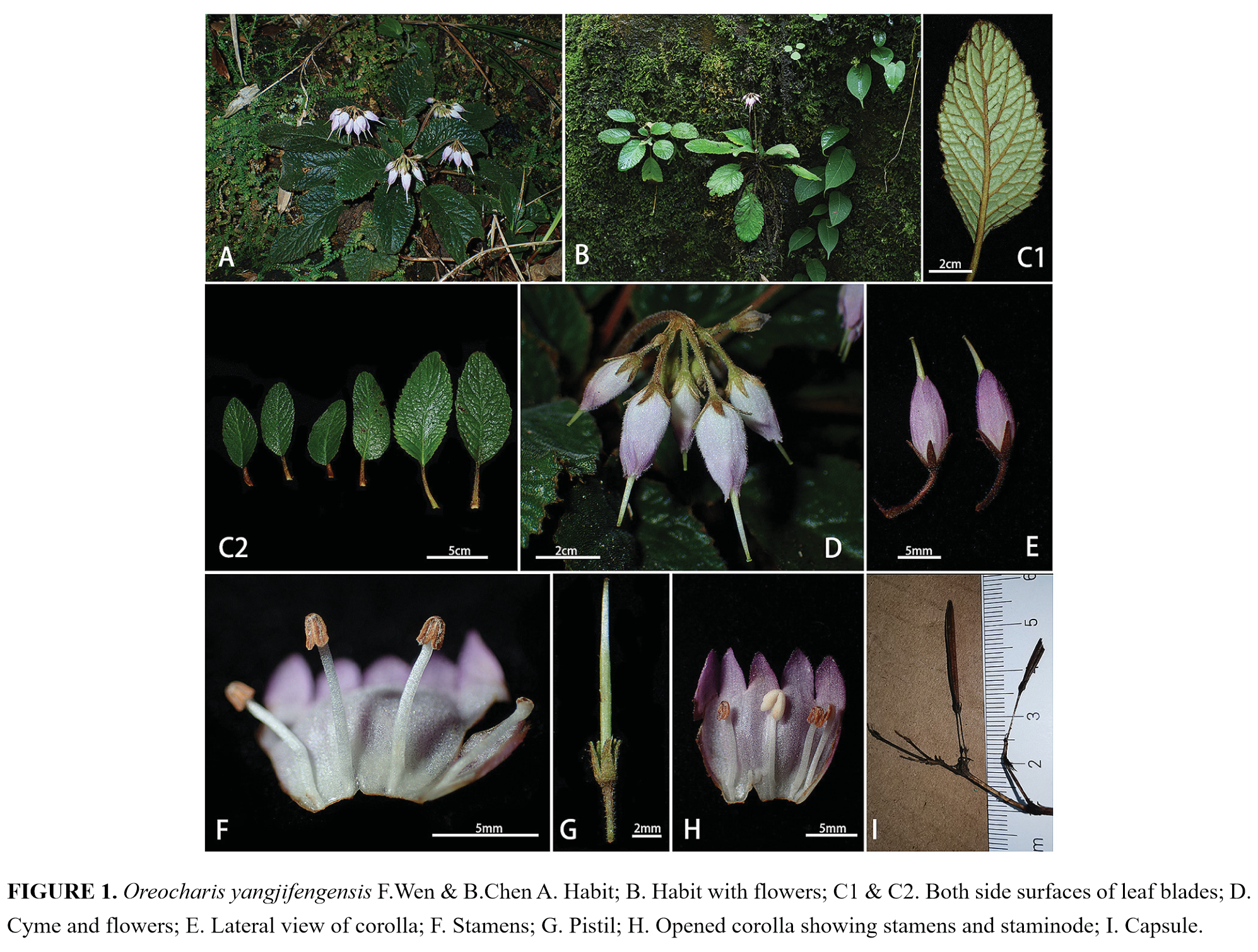No.10 SHU-WAN LI, MENG-QI HAN, XIAO-JIE LI, ZHEN-YU LI , XIAO-GUO XIANG
Hemiboea suiyangensis (Gesneriaceae): a new species from
PhytoKeys 99: 99–106
ABSTRACT
The limestone areas in south
Original article link: https://phytokeys.pensoft.net/articles.php?id=25265
PDF link: https://phytokeys.pensoft.net/lib/ajax_srv/generate_pdf.php?document_id=25265&readonly_preview=1

Fig. 1. Primulina cangwuensis (from the holotype). — A: Habit. — B: Opened corolla with stamens and staminodes (pointed out by arrows). — C: Calyx (partly dissected), disc and pistil. — D: Mature fruit.
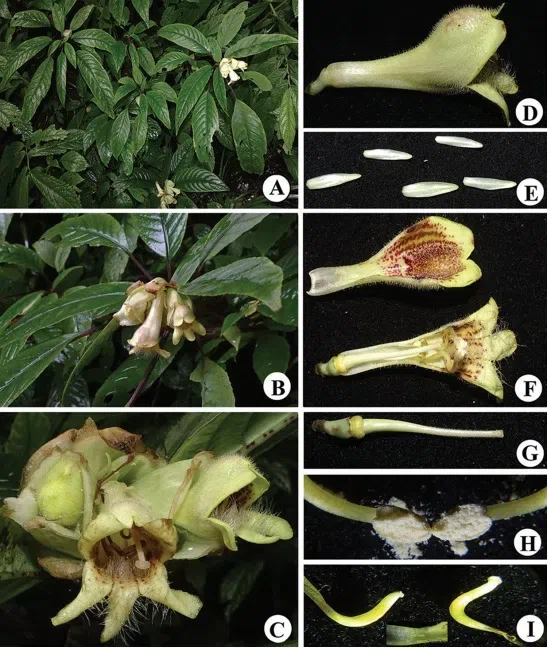
Fig. 2. Primulina cangwuensis. — A: Habitat. — B1 and B2: Habit. — C: Cyme, illustrating morphological polymerphism of bracts. C1: (a) vertical view of corolla, (b) two bracts, (c) young fruit; C2 and C3: three bracts (C2: adaxial surfaces, C3: abaxial surfaces). — D: Corolla in (D1) lateral view and (D2) frontal view. — E: Calyx lobes and bilobed stigma. — F: Capsule.
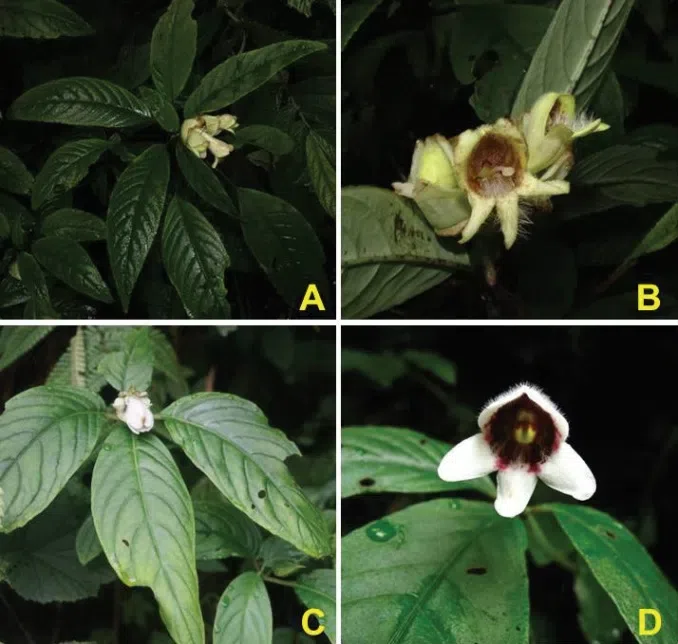
Fig. 3. Morphologically similar congeners of Primulina cangwuensis. — A: P. repanda (A1: plant in natural habitat, A2: corolla frontal view). — B: P. subulata (B1: cultivated plant, B2: corolla face view). — C: P. jianghuaensis (C1: plant in natural habitat, C2: corolla face view). — D: P. lobulata (D1: plant in habitat, D2: corolla face view).



